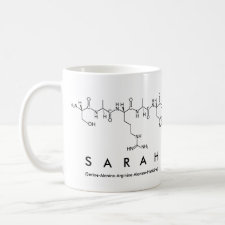
Authors: De Smet D, Monbaliu S, Dubruel P, Van Peteghem C, Schacht E, De Saeger S
Article Title: Synthesis and application of a T-2 toxin imprinted polymer.
Publication date: 2010
Journal: Journal of Chromatography A
Volume: 1217
Issue: (17)
Page numbers: 2879-2886.
DOI: 10.1016/j.chroma.2010.02.068
Alternative URL: http://www.sciencedirect.com/science/article/B6TG8-4YHP007-D/2/7400e75e5fcd3a53477a345339e6c6c0
Abstract: The synthesis of a T-2 toxin imprinted polymer and its application in food analysis are reported for the first time. A molecularly imprinted polymer (MIP) for the selective recognition of T-2 toxin (T-2) was synthesized by bulk polymerization. Methacrylamide and ethyleneglycol dimethacrylate were applied as functional monomer and cross-linker, respectively. Molecularly imprinted solid-phase extraction (MISPE) procedures were optimized for further application in the analysis of T-2. Scatchard plot analysis revealed that two classes of imprinted binding sites were formed in the imprinted polymer. The dissociation constant (KD) of the higher affinity binding sites was 7.0áμmol/l, while the KD of the lower affinity binding sites was 54.7áμmol/l. The performance of the MIP throughout the clean-up of spiked maize, barley and oat sample extracts was compared with the results obtained when using non-imprinted polymer, OASIS HLB« and immunoaffinity columns (IAC). Depending on the food matrix and the spiked concentration, recoveries after MISPE and non-imprinted solid-phase extraction varied respectively from 60% to 73% and from 21% to 57%. Recoveries obtained after clean-up using OASIS HLB« and IAC were in the range of 74-104% and 60-85%, respectively. Although highest recoveries were obtained with OASIS HLB« sorbents, the designed MIP and the IAC were superior regarding selectivity, cross-reactivity, matrix effect, limits of detection (LOD) and limits of quantification (LOQ). Depending on the matrix, LOD after MISPE ranged from 0.4áμg/kg to 0.6áμg/kg and LOQ from 1.4áμg/kg to 1.9áμg/kg. LOD and LOQ after OASIS HLB« clean-up varied from 0.9áμg/kg to 3.5áμg/kg and from 3.1áμg/kg to 11.7áμg/kg, respectively. The LOD and LOQ values obtained with IAC were in the range of 0.3-2.3áμg/kg and 1.0-7.7áμg/kg, respectively. Analysis of 39 naturally contaminated samples (maize, barley and oat) by liquid chromatography tandem mass spectrometry revealed that the MIP could be an excellent alternative for clean-up of contaminated food samples
Template and target information: T-2 toxin
Author keywords: molecularly imprinted polymer, T-2 toxin, Solid-phase extraction, mycotoxins, molecular recognition, food



Join the Society for Molecular Imprinting

New items RSS feed
Sign-up for e-mail updates:
Choose between receiving an occasional newsletter or more frequent e-mail alerts.
Click here to go to the sign-up page.
Is your name elemental or peptidic? Enter your name and find out by clicking either of the buttons below!
Other products you may like:
 MIPdatabase
MIPdatabase









